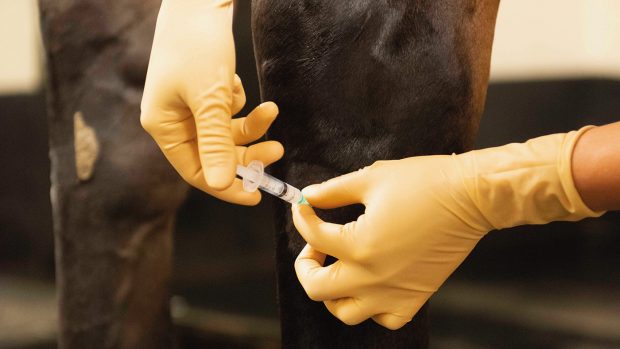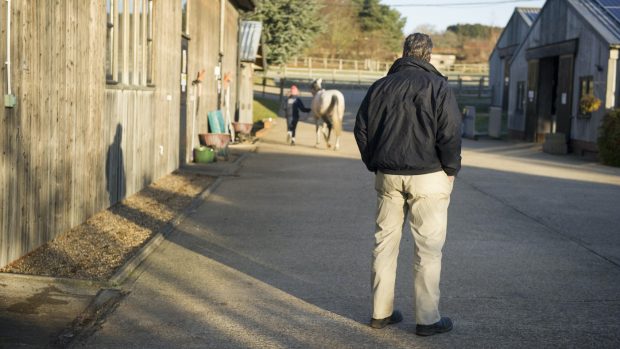Read more about lameness in horses
Find an equine vet
It is often assumed that it is possible to determine the source of pain-causing lameness by evaluating gait characteristics.
Unfortunately this is not always the case, because there are many ways in which a horse’s gait may be modified.
Often lameness is only apparent on a circle – sometimes the affected limb is on the inside of the circle and sometimes the outside.
A horse may be bi-laterally lame (lame in more than one leg), or unlevelness may only be apparent under saddle.
Some horses may seem completely sound in-hand and on the lunge, even to a lameness expert, but appear lame when ridden.
This sort of lameness may only become apparent in specific circumstances, for example, in left half-pass or on a 10m-circle right, or the problem may manifest as a four-time rather than a three-time canter. Perhaps the saddle has developed a tendency to slip to one side.
Such subtle lameness can have a major impact on performance.
More complicated still is a horse that does not appear overtly lame either in-hand or under saddle but feels lame to ride. Such horses are described as “bridle lame”.
The inference is that the way in which the horse is being ridden induces lameness. While I think a rider can have this effect, I also believe that any lameness that can be felt but not seen usually reflects an underlying source of pain.
A skilled rider may be able to mask such lameness – but that does not necessarily mean that the horse does not have a pain-related gait abnormality.
The development of technological gait analysis provides potentially interesting and useful information, but I do not believe that currently any such techniques can replace a skilled lameness diagnostician.
For the full veterinary article on assessing lameness, see the current issue of Horse & Hound (3 November, 2011)
Find out more about lameness in horses
Looking for an equine vet ?




